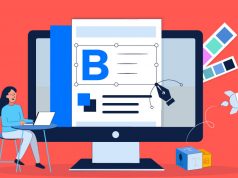Revolutionizing the Educational Landscape
Education is undergoing a significant transformation, with technology playing a pivotal role in shaping the future of learning. One of the key advancements driving this change is Software as a Service (SaaS). This cloud-based technology offers a range of tools and applications designed to enhance both classroom management and the learning experience. By providing easy access to various educational resources and facilitating seamless communication between teachers and students, SaaS is revolutionizing the educational landscape.
Streamlined Classroom Management
Effective classroom management is essential for creating an environment conducive to learning. SaaS platforms offer a suite of tools that help educators manage their classrooms more efficiently. These tools range from attendance tracking and grading systems to scheduling and communication platforms. For instance, a teacher can use a SaaS platform to automatically record attendance, thereby saving time and reducing errors associated with manual record-keeping.
Additionally, SaaS solutions often include gradebook applications that allow teachers to input and calculate grades quickly. This not only simplifies the grading process but also provides students with timely feedback on their performance. With these tools, educators can focus more on teaching and less on administrative tasks, ultimately improving the quality of education.
Enhancing Learning Tools
SaaS is not just about managing administrative tasks; it also significantly enhances the tools available for learning. Interactive and engaging content is crucial for maintaining student interest and promoting better understanding. SaaS platforms offer a variety of multimedia resources, including videos, interactive simulations, and virtual labs, which can make learning more engaging and effective.
Moreover, SaaS platforms often include collaborative tools that facilitate group work and peer learning. Students can work together on projects in real-time, regardless of their physical location. This fosters a collaborative learning environment and helps students develop essential teamwork and communication skills.
Personalized Learning Experiences
One of the standout features of SaaS in education is its ability to provide personalized learning experiences. Every student has unique learning needs and paces, and SaaS platforms can cater to these individual differences. Through adaptive learning technologies, these platforms can analyze student performance data and tailor the content to meet each student’s specific needs.
For example, if a student is struggling with a particular concept, the platform can provide additional resources and practice exercises to help them master the topic. Conversely, if a student is excelling, the platform can offer more advanced materials to keep them challenged and engaged. This level of personalization ensures that all students have the opportunity to succeed.
Improving Communication and Collaboration
Effective communication is a cornerstone of successful education. SaaS platforms enhance communication between teachers, students, and parents, ensuring that everyone stays informed and engaged. Teachers can easily send announcements, assignments, and feedback to students, while parents can monitor their child’s progress and stay involved in their education.
Furthermore, SaaS platforms often include forums and discussion boards where students can ask questions, share ideas, and collaborate on projects. This promotes a sense of community and encourages active participation in the learning process. By facilitating open and continuous communication, SaaS platforms help create a more connected and supportive educational environment.
The Role of the SaaS Copywriter
The success of SaaS platforms in education hinges not only on their technological capabilities but also on how effectively they communicate their benefits to users. This is where the role of a SaaS copywriter becomes crucial. A skilled SaaS copywriter can craft compelling content that highlights the advantages of these platforms, making them more appealing to educators and institutions.
By understanding the unique needs and challenges of the education sector, a SaaS copywriter can create targeted messages that resonate with the audience. This involves writing clear and concise product descriptions, engaging blog posts, and informative guides that showcase the value of SaaS solutions in education. Effective copywriting can drive adoption and ensure that these innovative tools reach the educators and students who can benefit the most.
Conclusion
SaaS is transforming education by streamlining classroom management, enhancing learning tools, and providing personalized learning experiences. Its impact is profound, making education more efficient, engaging, and accessible. As these platforms continue to evolve, the role of the SaaS copywriter will remain vital in communicating their benefits and driving their
adoption. With the right combination of technology and effective communication, SaaS has the potential to revolutionize education and pave the way for a brighter future.





